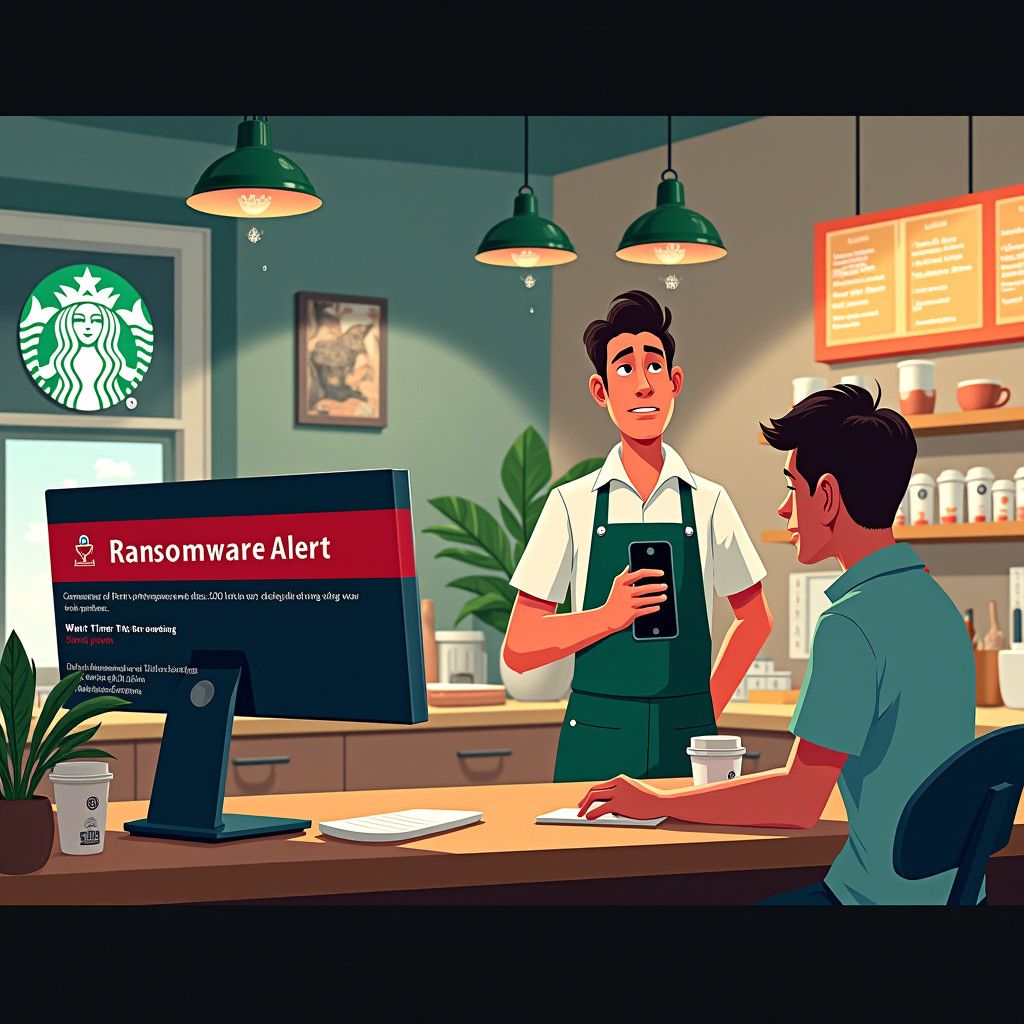In a shocking turn of events, Starbucks faced a significant disruption in its scheduling system due to a ransomware attack. The incident forced the company to resort to manual payroll methods to ensure that its employees were accurately compensated during this critical period. This attack not only raises questions about cybersecurity preparedness but also highlights the increasing frequency and sophistication of threats facing the retail industry.
The Incident
According to reports, the ransomware attack specifically targeted Starbucks’ scheduling software, immobilizing a crucial operational element during one of the busiest shopping seasons. With the holiday rush around the corner, businesses like Starbucks rely on robust systems to manage staffing efficiently. However, this attack underscored vulnerabilities in even the most recognized global brands.
In response, Starbucks confirmed that it had to implement manual payroll solutions, indicating the level of disruption that ransomware can cause. Notably, the company had to ensure that employees’ hours were tracked correctly, demonstrating the challenges companies face when technology fails. The need for agility and accurate record-keeping is amplified in a retail environment where employee compensation directly impacts morale and service levels.
Implications for the Retail Industry
The Starbucks incident is not an isolated one. Cybersecurity threats are pervasive in today’s digital landscape, particularly in the retail sector, which has increasingly leveraged technology for operations and customer engagement. As retailers adopt digital tools for scheduling, inventory management, and customer interaction, they inadvertently increase their exposure to cyber vulnerabilities.
The Federal Bureau of Investigation (FBI) has warned that ransomware attacks have surged, especially targeting large corporations and institutions. The motives behind these attacks often revolve around financial gain, forcing companies to pay substantial ransoms to regain access to their data. The average ransom payment has significantly increased over the years, making it a costly affair for the affected organizations.
Lessons Learned: Strengthening Cybersecurity
The question now arises: what can retailers learn from this incident? Here are several critical takeaways:
1. Regular Risk Assessments: Companies need to conduct regular security assessments to identify potential vulnerabilities. Cybersecurity is not a one-time effort; it requires constant vigilance and updates to security protocols.
2. Employee Training: Employees often represent the first line of defense against cyber threats. Regular training to educate staff about recognizing phishing attempts and securing sensitive information is crucial.
3. Data Backup Solutions: Retailers must implement robust backup solutions. Regular backups can prevent data loss and make it easier for companies to recover their systems without paying a ransom.
4. Incident Response Plan: Developing a comprehensive incident response plan is essential. A well-defined plan allows for quick actions in the event of a cyberattack, minimizing downtime and financial losses.
5. Investing in Technology: As cyber threats evolve, so too must the technologies used to combat them. Investing in advanced cybersecurity technologies, including intrusion detection systems and firewall protection, can provide an additional layer of security.
Conclusion
The Starbucks ransomware incident serves as a stark reminder of the vulnerabilities that companies face in today’s technology-driven world. As more retailers rely on digital platforms to manage their operations, the stakes continue to rise. Cybersecurity should not merely be seen as a technical issue but as a vital aspect of business strategy.
By implementing stronger security measures and fostering a culture of awareness among employees, companies can significantly mitigate risks and protect their operations. As the retail landscape continues to evolve, staying ahead of cybersecurity threats will be a key determinant of success.
